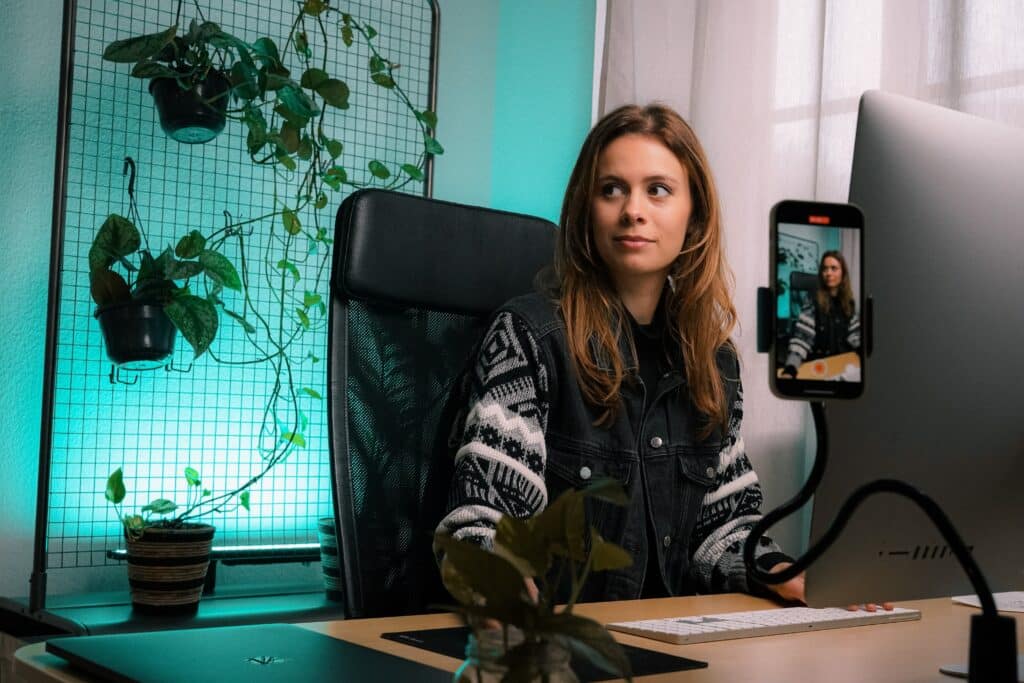Table of Contents
The fashion blogging phenomenon started around 2004-2005, when platforms such as Blogger and WordPress have made blogging accessible to all.
If we were to talk about it now with a member of Generation Z, he would probably point at us as 'boomers', someone who had become attached to something already 'old', a bit like our parents when they proudly recounted the coin-operated telephone calls in telephone booths.
Unlike many things that have evolved or disappeared with changing fashions and technology, the 'blog' section of our website remains FUNDAMENTAL in whatever strategy we want to adopt in building a product brand or us as professionals.
For this I wanted to retrieve this article originally written in 2015 for reflect on the evolution of blogging and its protagonists and provide a practical guide and food for thought for using the blog in 2023.
Initially, fashion blogging was mainly seen as a hobby, a way for fashion enthusiasts to share their thoughts and ideas with the world. But with the passage of time, it has become so much more.
Fashion bloggers started to gain a following and visibility, and with it came monetisation opportunities.
Advertisers and brands have begun to recognise the value of these authentic and influential voices, and fashion blogging has become a career in its own right.
Then, with the advent of social media, the digital fashion landscape changed once again. Platforms such as Instagram and Pinterest have enabled more immediate and visual image sharing, and fashion bloggers have started to become content creators.
Yet, Despite these evolutions, the blog remains a pillar of digital fashion. It offers a platform on which longer and more thoughtful content can be developed, enabling a deeper relationship with the audience.
Moreover, it offers more creative freedom than social media, which can be limited by their specific guidelines and algorithms.
If the content published on almost all social media (with the possible exception of YouTube) disappears in the feed in a matter of moments or seconds, the blog retains the innate ability to give us a historicity and remain persistent over time.
Take this article for example: it was originally written in 2015 and now after more than eight years it is still available on the internet and is being searched and found by search engines. At this very moment YOU are here and reading me!
I'm sure you're realising the potential, but let's go step by step?

The Pre-social Era, the first bloggers
In an era before social media and when the Internet was still an enigma, blogs were born. In the early 2000s, thanks to platforms such as blogger.com, anyone could create their own online space and share content on any topic.
These early bloggers were part of small communities and focused on making content for fun rather than seeking likes or sponsors.
However, it cannot be denied that the blogging scene has undergone considerable changes over the years, with many bloggers who have evolved into digital entrepreneurs , we need only think of Chiara Ferragni who from his blog "The Blonde Salad' became a multi-millionaire entrepreneur.
On an international level, a significant example is Leandra Medinewho founded the blog Man Repeller in 2010. Originally focusing on bizarre and daring outfits that the 'fashion victims' adored, Man Repeller has grown over the years into a lifestyle site.
Even today, the site covers a range of topics, from fashion to beauty, pop culture and more, with Medine known for her eccentric style and unique voice.
Another interesting example is Jane Aldridge, who started her blog, Sea of Shoes, at the age of 15. Initially, her blog focused on her vintage finds and the eccentric styles she wore, but over time she started covering more mature topics such as weddings and interior decoration.
This exemplifies the importance of growing your blog with yourself, developing a personal tone and writing style that gives readers a sense of who you are and how you have grown.
In parallel, the evolution of a blog's message is another crucial aspect. Tavi Gevinson, who started Style Rookie at the age of 11, expanded the scope of her blog to include topics such as pop culture and feminism, later launching a new site, Rookie, which covers an even wider range of topics.

Personal Brand in Fashion Digital
Online content creation is not just about sharing the latest trends or your favourite outfits. It is about creation of your personal brand.
This implies recognise your unique strengths and skills, and build a consistent image across all your platforms and interactions.
A strong personal brand can make the difference between being just another face in the crowd and becoming a successful fashion influencer.
To do so, it is essential be authentic and consistent.
It means staying true to yourself, even when this might go against the prevailing currents.A blog can be a powerful tool in this process of personal brand building.
It can function as a platform to explore and share your unique vision, to tell your story in a deeper and more meaningful way, and to build a community of readers and followers who share your interests and values.
In conclusion, from fashion blogging to content creation, digital fashion has come a long way. Yet, despite new platforms and trends, some things remain the same.
Authenticity, passion and a unique voice have always been, and will continue to be, the key to success no matter how the platforms evolve.
To paraphrase a famous film: 'the world will always need heroes' and especially of their stories and inspirations!
Platforms will evolve, trends will change, but these fundamental truths will remain.

Looking ahead, the future of fashion blogging and content creation looks bright. Interest in fashion shows no signs of slowing down, and the demand for authentic and influential content is stronger than ever.
In a world where anyone with a smartphone can become a content creator, the distinction will be found in the ability to create a strong personal brand and build a community of loyal followers.
At the same time, the monetisation opportunities continue to expand. From collaborations with brands, to selling products directly through blogs or social media, to affiliate programmes, there are more and more ways to turn a passion for fashion into a lucrative career.
But, as always, success will not only be given to those who follow trends, but to those who set them. These are the true innovators, those who are able to see beyond the current digital fashion landscape and imagine new possibilities.
Regarding the role of the blog, despite the popularity of platforms such as Instagram and TikTok, the blog does not seem destined to disappear. On the contrary, continues to offer a unique point of view, a space to express thoughts and ideas in more depth and detail.
The blog, therefore, continues to represent a point of reference in the panorama of digital communication. A place where creativity merges with analysis, the personal brand meets the audience, and fashion meets culture and society.
The future of digital fashion will be increasingly interconnected, dynamic and open to new forms of expression. As always, success will be for those who manage to evolve with the times while remaining true to themselves and their unique vision. Because, in the end, that is what it means to be a true content creator in the fashion world.

Guide 2023 for making the most of your Blog:
On your way to emerge as an influencer and fashion designer, it is essential to develop a clear and organised strategy. Content and tone, which must be personal yet professional, play a significant role in the determine your credibility.
Building a following takes time, so it is important to understand who you are as a 'digital persona' and who you are addressing. In addition, content planning can be key to increasing followers, with the goal of creating content that engages your target audience.
Creating a true positioning, building a following and becoming an opinion leader is not an easy task, it requires clarity, organisation and above all originality.
How to use the BLOG section of your site:
Optimising the use of your emerging designers' blog site can be a fantastic opportunity to increase the visibility of your personal brand and promote your products. Here are some tips on how best to do this:
Create quality content: The quality of the content you publish on your blog is crucial. You must offer your readers unique, interesting and well-written content. This can include exclusive interviews, in-depth articles on your design processes, style tips, fashion trends, and even behind-the-scenes looks at the creation of your collections.
Use SEO: Search engine positioning is key to attracting visitors to your blog. Research the most relevant keywords for your niche and incorporate them into your posts in a natural way. Good SEO can help you reach a wider audience.
Connect the blog to your social media: Your blog and your social media should work together to amplify your voice. Share your blog posts on your social channels and vice versa. This will help create a sense of cohesion between the various elements of your brand.
Make your products part of the story: When you write about your products, try to do so in a way that they fit naturally into the story you are telling. You can talk about how the inspiration for a particular design came about, the creation process or how that garment fits into current fashion trends.
Involve your readers: Try to engage your readers in comments, ask questions and respond to their comments. This will create a sense of community around your brand and make your readers more likely to become customers.
Use high quality images: A fashion blog must be visually appealing. Make sure you use high-quality images of your products and design processes. If possible, consider investing in a good photographer.
Create a clear call to action: At the end of each post, you should have a clear call to action that directs readers to your products or invites them to subscribe to your newsletter. This will encourage them to take the next step towards being a customer.
Remember, the key to a successful blog is consistency. Publish regularly, stay true to your voice and brand values, and your readers will be more likely to become loyal customers.
Want to learn more about this ESSENTIAL topic for your success as an emerging creative and designer? Join our Community.

















As a small niche brand, we at Spirit of St. Louis do not have a large blog where we tell stories of fascinating eras, such as the mix of absurd coincidences that gave rise to the Lindy Hopor hot topics such as the phenomenon of fast fashion or, again, how we create our modern vintage-style collections.
We do this not only for SEO reasons, but mainly because we like to tell people about our style and passion for past eras (in particular from the first half of the American 20th century) from which we derive the enthusiasm to continue doing.
We find it absurd that most brands have sites dedicated exclusively to sales.
Communication aside, where is the passion?
The blog is especially indispensable for explaining the inspirations behind one's brand and especially fashion collections.
This concerns both bloggers and companies.
I am surprised that many do not make use of it at all, leaving the task to the 'sponsors' of Google & C.
Shouldn't fashion above all be about involvement and passion?